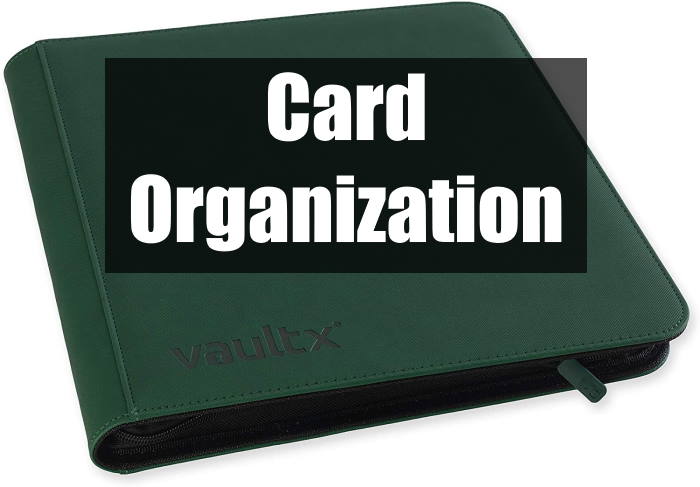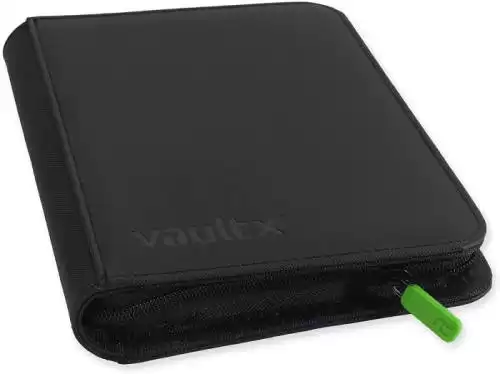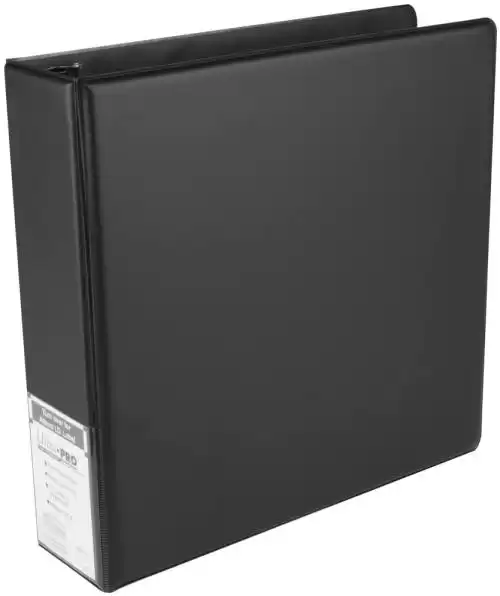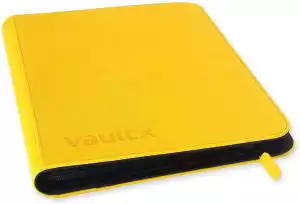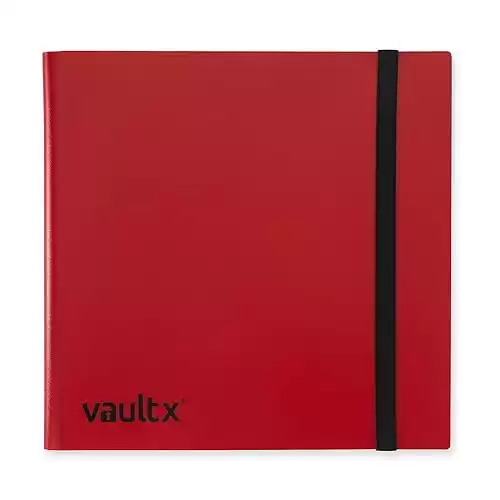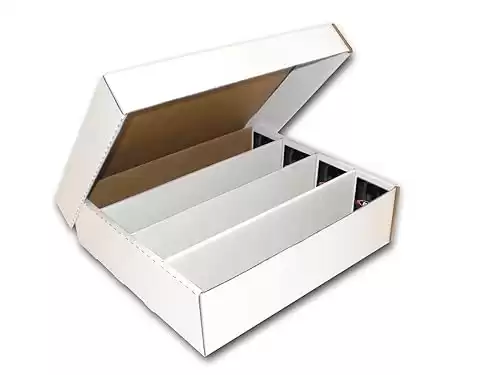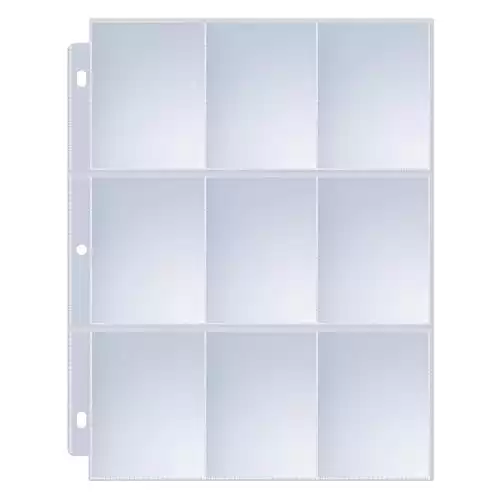It doesn’t take a long time playing or collecting a TCG like MTG or Pokemon for your collection of cards to get quite large. Even somewhat small collections can be quite cumbersome and space intensive. Therefore, organizing a collection of cards seems quite a daunting task to start for many people. There are many options available for accomplishing this task and which is best for you will depend on your needs as a player, and your personal preferences. One method that works quite well is storing cards in a card binder. Today we will look at the pros/cons of this method and how best to organize cards in a binder.
Players should organize their cards using 4-row card binders. Mtg players should organize rare/mythic rares by color and set. While commons and un-commons should be separated by rarity, set, and color. Pokemon players can do the same. However, pokemon players may prefer to store rarer cards by set and evolution chain. While lower value and rarity cards can simply be sorted by energy type/color.
The above method is a great starting point for beginners, seasoned players, and collectors alike. However, depending on the size of your collection and which of those categories you fall into, your needs will differ slightly. There are also many other things to consider. For example, what type of binder and pages are best? When should you use portfolios and how should you organize card binders for trading? Let’s take a deeper look at each of these questions and their answers.
How To Determine What Type Of Organization You Need?
There is some overlap in what generally works best for most players. However, some things will depend on how each person interacts with their TCG of choice. For example, someone constantly building new decks may what to organize differently than someone who collects full sets.
To determine how to best organize your cards it will help to find which of the following categories you best fit into. So, let’s take a look at how to organize cards in a binder for a few different player/ collector types.
Beginners/Small Collections
This is where we all start, and it is an amazing part of your TCG journey to be in. When you are in this starting stage your collection will likely be smaller and not as daunting to organize. However, organization is no less important, and starting early is a great way to make it easier as your collection grows.
A small 4×4 portfolio or a binder with removable pages is a good starting point for all players. It can hold smaller amounts of cards, like cards you may want to trade for example, and it’s convenient to travel to friends’ houses or events with. A small portfolio can even remain in your trade binder when your collection has grown larger.
Competitive Players
These would be players who have many decks and frequently switch cards in and out of them. An organization system that makes finding specific cards easy will probably be preferable for people who brew lots of decks. Therefore, I recommend a 3×4-row portfolio for competitive players of standard and/or extended.
Four-row binder sheets have three rows of four pockets. This makes it easy to see if you have an entire playset of a specific card because each row can hold a full four cards. Players of standard and eternal formats may want a separate binder for only standard legal cards.
Some players may prefer to use 3×3 removable pages rather than a portfolio. This is so, when one set rotates out of standard, it can simply be removed from the standard binder. Then each color can easily be put into its respective extended binder. This is much easier than having to remove cards from binder pockets and reorganize them to make room for more of a certain color.
Card Collectors
Most players do collect to some extent. However, this section refers to people who don’t need to be constantly pulling cards in and out for decks. Put another way, this is for people more focused on collecting than physically playing. As a result, this section will be geared toward a slightly more long-term organizational style.
For collectors, I would recommend a standard 3-row binder instead of the 4-row. This is because when collecting full sets, with only one of each card, the 3-row is more aesthetically pleasing to many.
In addition, most pokemon have 3 stages of evolution. So, collectors of pokemon can have the visual appeal of having the evolution chain fill up an entire row of a binder. Likewise, yu-gi-oh players/collectors can get away with 3-row card binders because yu-gi-oh has playsets of 3 instead of 4.
Many yu-gi-oh players organize in the same manner mentioned above for beginners and collectors. However, some deck brewers may organize binders by set and card type. Often having binders or pages separated by spell, trap, and monster cards for convenience.
Collectors, regardless of TCG, can organize their binders by set and card set number. When a set is released each card in the set is given a number out of the total number of cards in that set. As an example, here is the set list for core set 2020:
| Card Number | Card Name |
| 001/280 | Ariel Assault |
| 002/280 | Ajani, Strength of the Pride |
| 003/280 | Ancestral Blade |
This is a very effective way for set collectors to tell what cards from a set they are missing at a glance.
Trade Binder
Trade binders are card binders for cards you are interested in trading away for other cards. Good organization of trade binders can make the trade process easier for all parties. They are often taken with players to events and tournaments. For this reason, I recommend a small hardcover 4×4 portfolio, as they are easy to travel with. Let’s take a look at how to best arrange your tradable cards.
Generally, you want to place your highest rarity cards that you’re interested in trading, at the front of your binder. While less valuable or sought-after cards are towards the back of the card binder.
This organization helps everyone save time when looking for potential trades. Additionally, it’s a good idea to put cards that are not for trade upside down in the binder. For example, a card that you traded for earlier in the day and want to keep should be put upside down. This helps there be no confusion on what is and isn’t tradable.
How To Organize By Format
Standard Format
Competitive standard players can store cards in a standard-specific binder by color/energy type. With what is most relevant to standard upfront and less used things toward the back. This will make it easy to find the cards in each color that are most relevant to your format and/or what specific decks you are working on.
Commander
Commander collections stand to be much larger than standard collections. Players with very large collections may need a specific binder for rares of each color or energy type. Furthermore, rares should be organized by set as well as color. This can be achieved by placing a sticker or label on the bottom corner where one sets ends and another begins.
As an example, let’s say you are looking for the card Anointed Procession. You could grab your binder for white, flip to the tab for Amonkhet and this section would contain all the white rares/mythics from Amonkhet.
Related: MTG Modern: A Getting Started Guide (Primer)
Common/un-common cards or more bulk cards could be stored in binders the same way. However, this may be impractical for larger collections of cards. Instead, I would recommend organizing them the same way but storing them in cardboard storage boxes as opposed to binders. BCW cardboard storage boxes are designed specifically for this purpose and are very cost-effective.
Frequently Asked Questions
Where Can I Get A Card Binder?
Online
You can purchase card binders and portfolios from online stores like Amazon, eBay, and TCGplayer. All of these sites have a great selection of binders to choose from. Online shopping is a good option for those looking for a very specific size or look of the binder.
Being able to read reviews for products can also be helpful for players for are unsure of what to buy. Be sure to buy a D-ring binder as opposed to an O-ring binder. More on this and the differences later.
In-Store
Many common retail stores like Walmart and Target carry some binders and pages. Some stores have better selections than others, but most do have at least some. Most Walmart stores even carry some name-brand binders, like Ultra-Pro. These can be a good option for players who have some idea of what they want and want to avoid shipping – just be sure you are getting a quality item for your money if you go with something off-brand.
You can also purchase card binders and portfolios at your local game store. Buying from your LGS has a few advantages to it. They are likely to have a greater selection of name-brand products in different styles and colors. As well as, employees or other players that can help you find the right binder for you if you have questions.
Where To Buy Trading Card Binder Sleeves?
Binder sleeves can usually be purchased wherever card binders are sold. This includes online from Amazon and eBay. As well as from most retail stores and your local game stores as well. However, some stores like Walmart may not have all sizes/types of sleeve pages in stock at any given time. Just be sure to get pages where you put the card in from the side instead of the top. This is to avoid your cards being able to simply slide out when handling your binder.
How Many Cards Fit In A Binder Sleeve?
How many cards fit into a sleeve will depend on which style of binder sleeves you buy. The most common are 3×3 and 3×4 pages. The 3×3 pages have three rows of three pockets and can hold nine cards per page. While the 3×4 has three rows of four pockets and can hold 12 per page. Some brands have pockets on both sides of the page. Meaning that pages can hold nine or 12 cards on each side.
The same effect can be achieved with binder pages without openings on both sides. Simply put two cards back-to-back from the front. This hypothetically won’t damage your cards but be careful that the pockets aren’t too tight on the cards. This back-to-back method can also be hard to do if you put your cards into card sleeves before the binder page.
Do Binders Damage Cards?
As a general rule, binders don’t damage cards. However, they most certainly can damage them under certain circumstances. When stored correctly, with proper side-loading pages, binders are trustworthy to keep cards safe. There are certain things you should take into account to avoid damage to your cards. Here are some tips for avoiding binder damage:
- Sleeves should hold cards tightly enough that they don’t move around inside sleeve
- Make sure the holes (that the rings go through) hold the sleeves in place well
- Pages should load from the side vs the top, so cards can’t slide out
- The binder cover is long enough to stick out past the ends of the pages
- Binder has d-rings instead of o-rings
If your binder and pages check all of these boxes, then you should have very little risk of damaging your cards using a binder to store your cards.
Which Is Better An O-ring Or D-ring Binder?
As mentioned above, O-ring binders are substantially more likely to damage cards than D-ring binders. For this reason, I recommend players use exclusively D-ring binders for their collections. O-rings are mounted onto the binder spine. So, when closed the pages curl up. Alternatively, d-rings allow sleeves to lay completely flat due to their attachment to the rear cover.
Should You Sleeve Cards In A Binder?
The answer is yes. When putting cards in a binder you should sleeve them. Most quality binders provide enough room to place single-sleeved or double-sleeved cards within binder pockets. Sleeveless cards can move or fall out of top-loading binder pockets.
Related: Best Card Sleeves For MTG And Pokemon
How Do I Store My TCG Binders?
Card binders can simply be stored on bookshelves or similar shelves side by side. You should avoid stacking binders on top of each other, as this causes a lot of pressure. Especially with very heavy/full binders.
I have seen some people put their binders on shelves where the opening points towards the floor and the spine towards the ceiling. This is so the pages hang down instead of possibly coming into contact with the rings. However, this is not how damage from the rings usually occurs.
I don’t know that storing a binder in this way is harmful to cards. However, if you have done the tips mentioned above, I think it is unnecessary. If you have many binders on a shelf and they are somewhat snug, the friction on the covers can move the pages inside as you put a binder back in place.
To avoid this, simply grasp the binder in a way that you make contact with the front and back cover as you push it into its spot. This will stop any movement due to the covers from friction.
End Step
Organizing a collection of cards is a big undertaking at times. However, like most things in life, tasks worth doing are often difficult. Organizing your cards in binders is no exception. With that said, hopefully, the methods listed here will make it as easy as possible for you. So, organize your cards in a way that works for you; It will save you time in the long run. So that you can brew that next build or locate the card you need to complete your next set.
